
Whitewater Rafting is an adventure to experience anywhere in the world, but in Costa Rica, your rafting will be surrounded by a breathtaking landscape at every turn. Never mind which river you are riding; fascinating rainforests are the edges of all rivers where there is rafting. So, join us in this complete guide to whitewater rafting in Costa Rica!
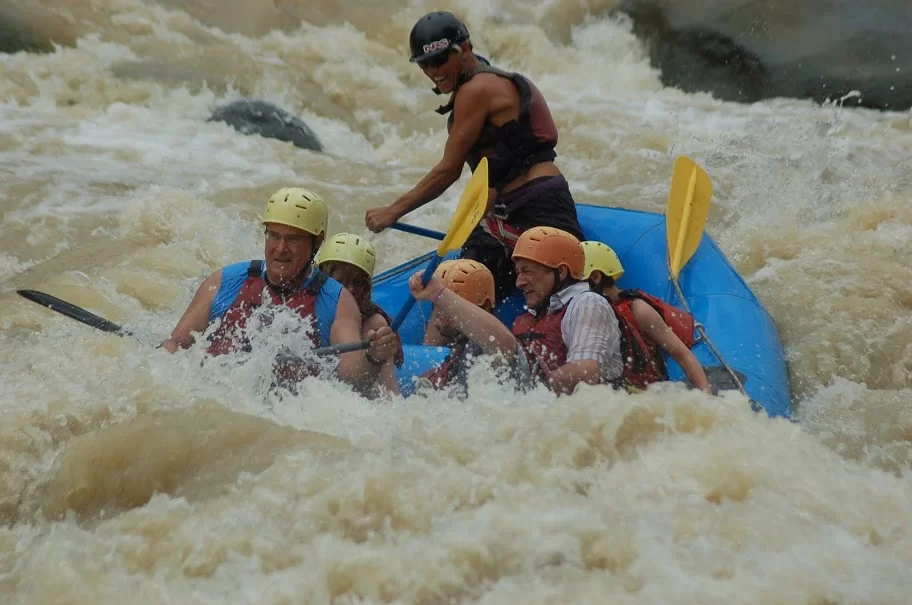
Rafting is an exhilarating experience, wherever you enjoy it. It takes adrenaline and a daring attitude, and it is usually done in the most beautiful environments in the world. Costa Rica has a lot of mountains, making some of the best rafting rivers in the world.
Rafting in Costa Rica is enjoyed in some of the most breathtaking scenarios in the world. Costa Rica’s best rivers for whitewater rafting offer exciting experiences for specialists and amateurs alike. Even more, when you go whitewater rafting in Costa Rica, you will be submerged in the core of pristine rainforests, where you will delight in wildlife sightings, see the virgin forests, and encounter remote indigenous villages.
You will be going through areas not usually visited by tourists and seeing Costa Rica off the beaten track.
In Costa Rica, you can get adventures and thrilling experiences in unblemished nature while enjoying the fantastic hospitality of the Costa Ricans and the biodiversity that makes Costa Rica so respected.
If you have never done rafting, we’ll give you a short intro before submitting an overview of the best rafting rivers in Costa Rica and the options open.
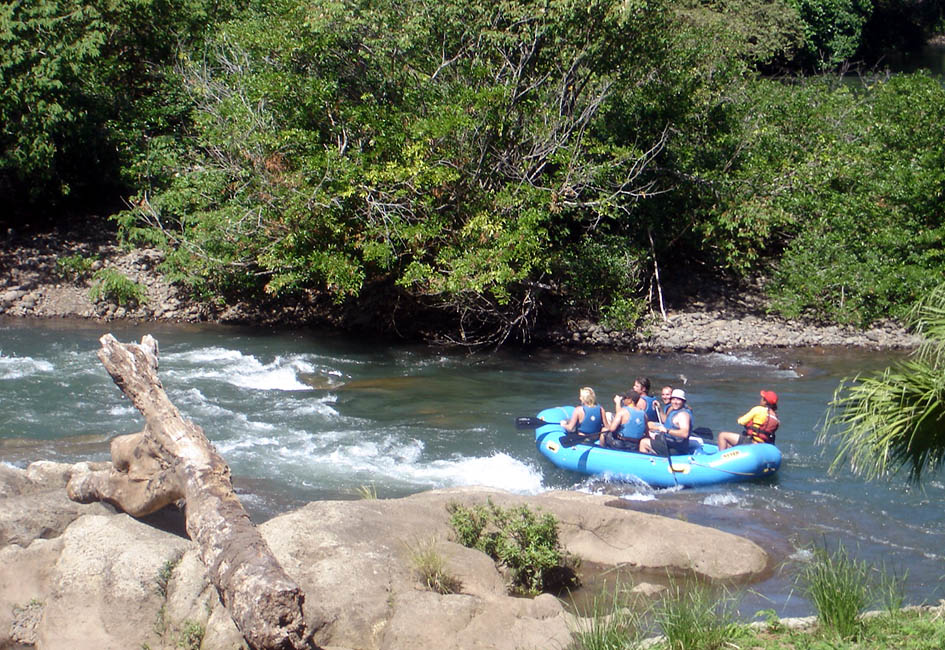
What is whitewater rafting?
Whitewater rafting is a fun outdoor activity where an inflatable raft is used to navigate a river with passengers sitting on it and paddling through the different flow sectors while the tour guide is usually at the back of the raft managing navigation. The rivers in Costa Rica grant some great hits and dips, creating whitewater rafting experiences.
Rafting Grades of Difficulty
There are classes of effort for whitewater rafting (according to the International Scale of River Difficulty).
Whitewater rivers are ranked by grade of difficulty. In Costa Rica, you’ll notice rapids rated from I to V, with I being the most relaxed and best for small children or passengers who care more about the scenery and wildlife than the thrill of white waters.
- I and II class rivers are floating, easy-flowing trips.
- III-class rivers with rough white waters have some areas, but they may still be shallow and not as strong.
- IV-class river rafting depends much more on the paddling and interaction of the participants, and it is adventurous and thrilling.
- V-class rivers are kept for very experienced people. They may even contain some small waterfalls and a continuous, rapid water flow.
A river may change its classification depending on the area where rafting is practiced. As well as depending on the period of year you take the trip.
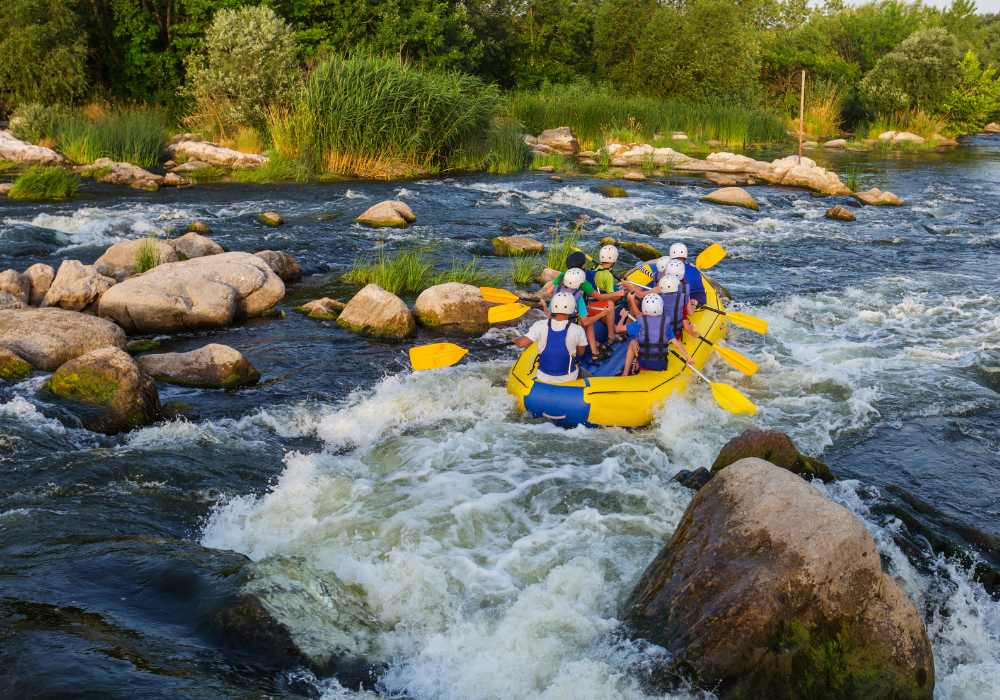
Safety Tips for White Water Rafting
• Pay attention to your guide’s directions and your environment.
• Use sunblock on all exposed skin.
• Wear proper footwear (waterproof if possible!). Either strapped sandals or water shoes.
• Use a long-sleeve shirt.
• Be careful with your glasses—if you wear them, make sure they are on a neck string.
Types of Rafting Excursions
Your rafting travel experiences will change depending on where you are staying, but you can choose from one-day, multi-day, or multi-adventure packages. Ask the Terranoval Travel Designer for the different sorts of trips you may get while enjoying Costa Rica.
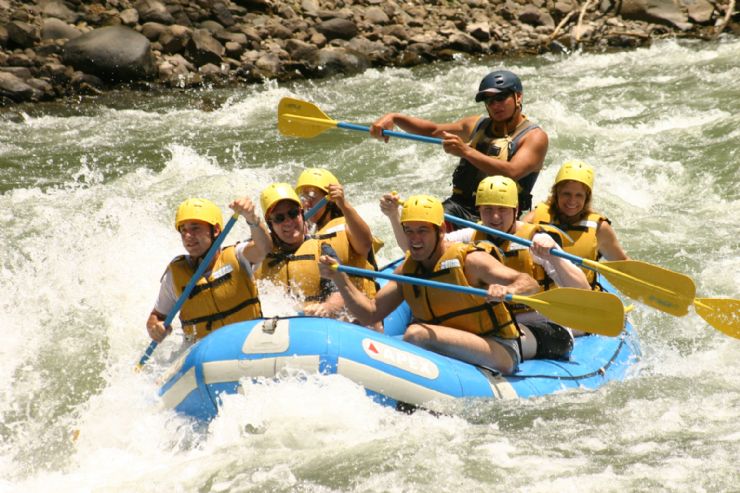
Is There a Better Time to Go Whitewater Rafting in Costa Rica?
Yes and no: the best time for whitewater adventures is shortly after the rainy season, when rivers are at their most abundant. November and February are favorable months (in the Caribbean and Northern rivers).
Dams control several of the rivers in Costa Rica, so they are enjoyed all year long. Acknowledging that various areas of Costa Rica receive diverse levels of rainfall during the rainy season, it depends on the region you are visiting to have the best season for river rafting.
I wouldn’t recommend going rafting at the end of the rainy season, October or early November, as usually the rivers may turn dangerous. If you are coming in the last months of the year, please find out the levels of the water before reserving a tour.
You can also ask me about it, and I’ll call some of the best rafting tour guides in the country to find out in real time.
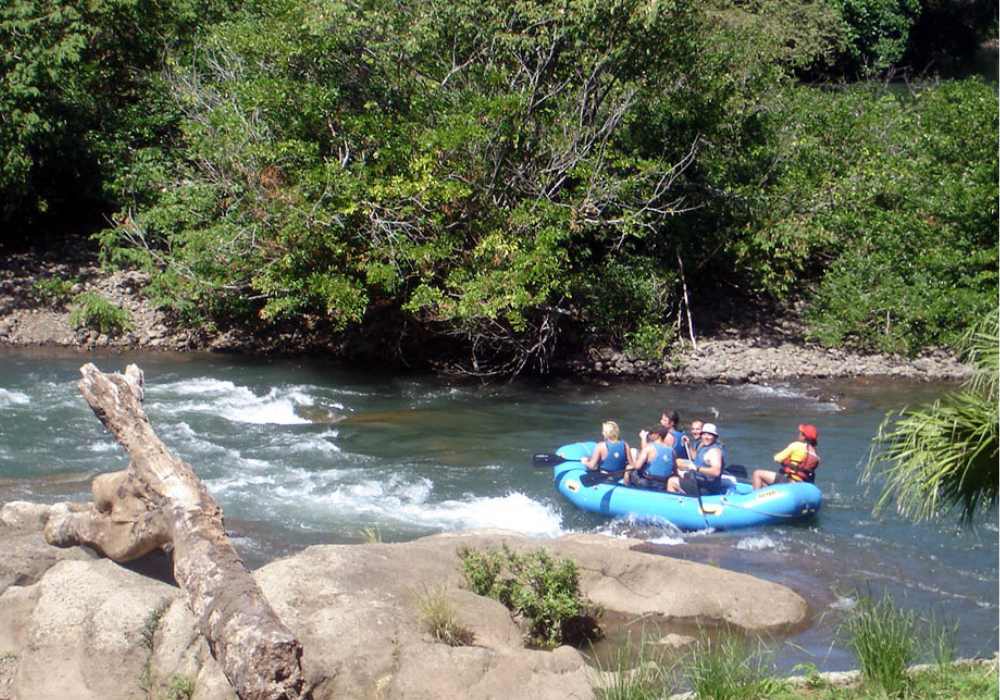
The Best Rivers for Whitewater Rafting in Costa Rica
Costa Rica has some of the world’s best whitewater rafting as well as some of the safest.
Not only do the classifications dictate age requirements, but there is also a great variety of stretches, from elementary Class I and Class II to high-adrenaline stretches for expert rafters. You will find the requirement in age is 8 or 12 years old as a minimum. It mainly depends on weight.
Fortunately, the possibilities are many. In Costa Rica, you can find in a tiny range more than a dozen established rafting rivers running, and new ones are added almost every year.
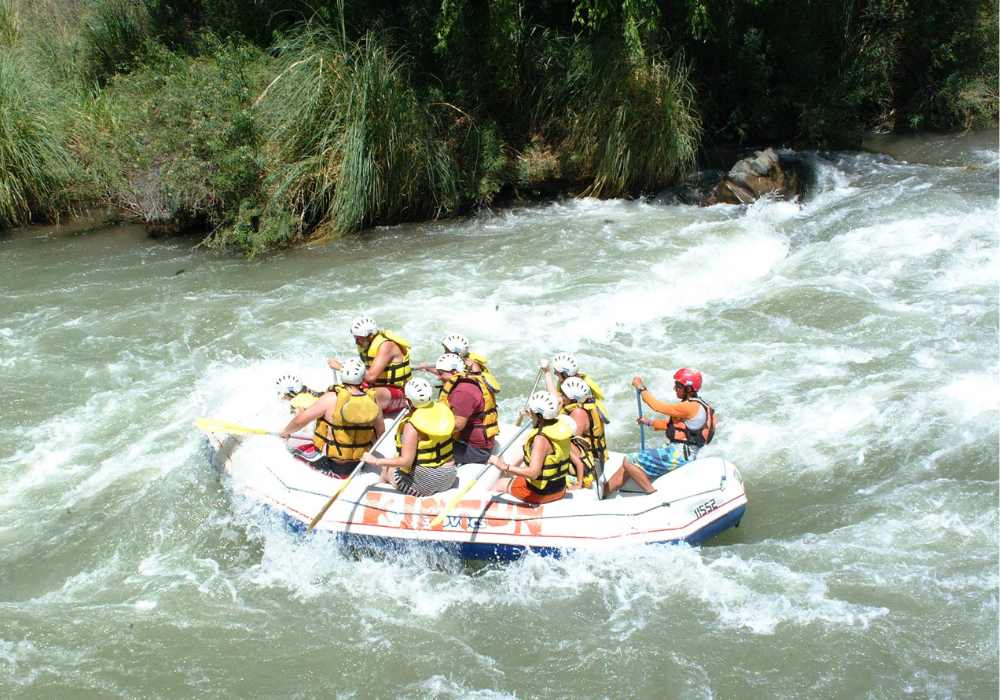
Where to White Water Raft in Costa Rica
It depends on where you are in Costa Rica and how important it is to enjoy some rafting.
To put it another way: If you have done it a couple of times and you have enjoyed it, you want to do it again. Please check with your Terranoval Travel Design, which will be the perfect river for you, according to your itinerary.
If, however, you are a whitewater rafting fan, and wherever you go, you practice rafting, you already know the one river that you have to run in Costa Rica. Thus, it would help if you stayed in the Central Valley, Turrialba Valley, or the Caribbean Plains to enjoy its wonder entirely.
The Pacuare River.
The Pacuare River deserves a special mention as it is considered among the ten best rivers to practice whitewater rafting in the world.
With over 50 rapids in its flow, the Pacuare River traverses some of the most breathtaking rainforests in the world; with waterfalls and canyons covered in lusciousness, Pacuare is an unforgettable experience for any rafting lover.
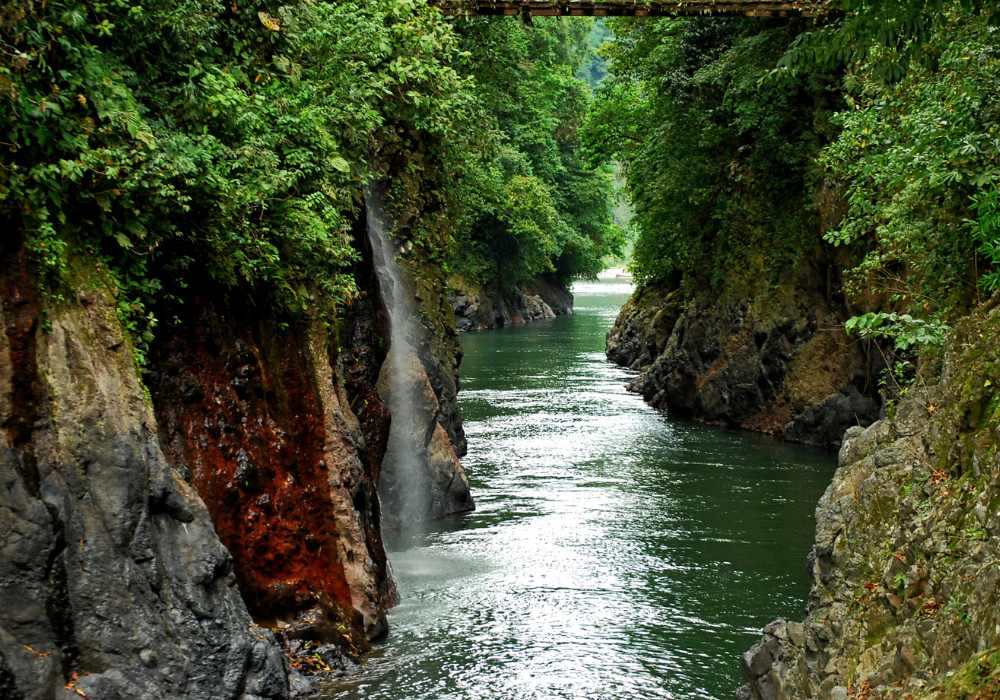
In this magnificent whitewater rafting in Costa Rica you will probably see toucans, sloths, lots of aquatic birds, maybe monkeys, and, if lucky, one of the elusive cats that populate these forests.
This is also an excellent river for first-timers, but you must know that you will be sitting on the edge of a raft and paddling for almost five hours. You must be the right age and have an excellent condition to face this fantastic river successfully.
Difficulty: Class III-IV
Approximate river time: 4 hours
Distance: 30 km/18 mi.
Number of rapids: 52
Minimum age: 12 years
San José and the Caribbean area:
Reventazón River, Class II/III rapids
The Reventazón River has rapids varying from mild class I bounces to turbulent class V falls. Still, popular rafting trips usually go for the Florida and El Carmen sections, which are essentially class II/III rapids.
Rafting the Reventazon River is for beginners. Nevertheless, even seasoned rafters visiting in groups with less experience will enjoy the rafting day. This is a great trip to enjoy nature; you can see monkeys, sloths, iguanas, and many aquatic birds at the edge of the water. During the rainy season, it’s charming as bright blue morpho butterflies border the shores.
However, if you are a pro, know that the Reventazon River is used instead of the Pacuare. When this happens, it usually is the result of pouring rains and dangerous conditions in Pacuare. Depending on your itinerary, make sure you get another rafting day in your travel plan.
Difficulty: Class II III
Approximate river time: 2 hours
Distance: 10 km/7 mi.
Number of rapids: 9
Minimum age: 6 years
Rio Sarapiqui—Class II, III, and IV rapids—Year-round
The Sarapiqui River flows down from the Central Volcanic Range of Costa Rica and to the border with Nicaragua, where it becomes part of the Sucio River and then the San Juan River. The river’s borders and dark green waters are full of tropical wildlife, creating the softer rapids (ideal for beginners and families with children or elderly) particularly satisfying.
When you raft at a slower pace, you’ll have more chances and time to appreciate the beautiful scenarios around the river. The Sarapiquí is in the northern area of Costa Rica, a less visited, however impressive, rainforest region. Either if you stay in the numerous lodges around the Sarapiqui River or are coming from the Central Valley or the Arenal Volcano region.

The Sarapiquí River is well-known as the picturesque river of Costa Rica’s rainforest, with 35 kilometers of preserves, magnificent natural views, and great fun for all. An upper section with 11 km of really white water rapids class IV, for the knowledgeable and physically equipped; the 13 km of classes II and III for learners, children, or people who are more into the fun than the adrenaline-oriented adrenaline.
There is a third sector where you will find plenty of tours that are done in the slow waters of the Sarapiqui when it is already getting closer to its ending in Rio Sucio.
Difficulty: Class III-IV
Approximate river time: 2.30 to 3 hours
Upper Sarapiquí:
Distance: 11 km/7 mi.
Number of rapids: Over 30
Minimum age: 15 years old
Lower Sarapiquí River:
Difficulty: Class II-III
Approximate river time: 2 hours
Distance: 13 km/8 mi.
Number of rapids: Over 30
Minimum age: 9 years old
La Fortuna and Arenal Volcano
Rio Balsa—Class II and III—Year-round
Situated close to the Arenal Volcano and La Fortuna, the Balsa River is the closest whitewater river to Costa Rica’s most famous volcano, and it grants beginner-level rapids. The water level of the Balsa River is controlled by a hydroelectrical dam that makes this river the most reliable rafting in the region.
The Balsa River is a perfect option for those apprehensive about rafting in Costa Rica, as it is an exciting yet not overpowering experience.
Difficulty: Class II-III
Approximate river time: 2 hours
Distance: 13 km/8 mi.
Number of rapids: Over 20
Minimum age: 9 years old
Manuel Antonio and Central Pacific Region
Rio Savegre—Class II and III—May to January
The Savegre River is famed to be the cleanest river in Costa Rica. And as a whitewater river is another brilliant option for families, with day trips being not too challenging. Along with mellow rapids, you can also head off for walks to discover waterfalls and halt in beautiful swimming pools on the way down the river. This free-flowing river is deemed to have one of the most transparent waters in all of Central. This is one of the closest whitewater rivers to the Manuel Antonio and Quepos area.
Distance: 10 km/7 mi.
Number of rapids: 9
Difficulty: Class II III
Approximate river time: 2 hours
Minimum age: 8 years
Rio Naranjo – Class III and IV – May to January
This ride goes into the heart of Costa Rica, starting in the rainforest and going down to farming regions. The trip is perfect for beginners in good physical condition or experienced rafters looking for an adventure experience in Manuel Antonio or the Central Pacific.
Distance: 10 km/7 mi.
Number of rapids: 9
Difficulty: Class II III
Approximate river time: 2 hours
Minimum age: 8 years
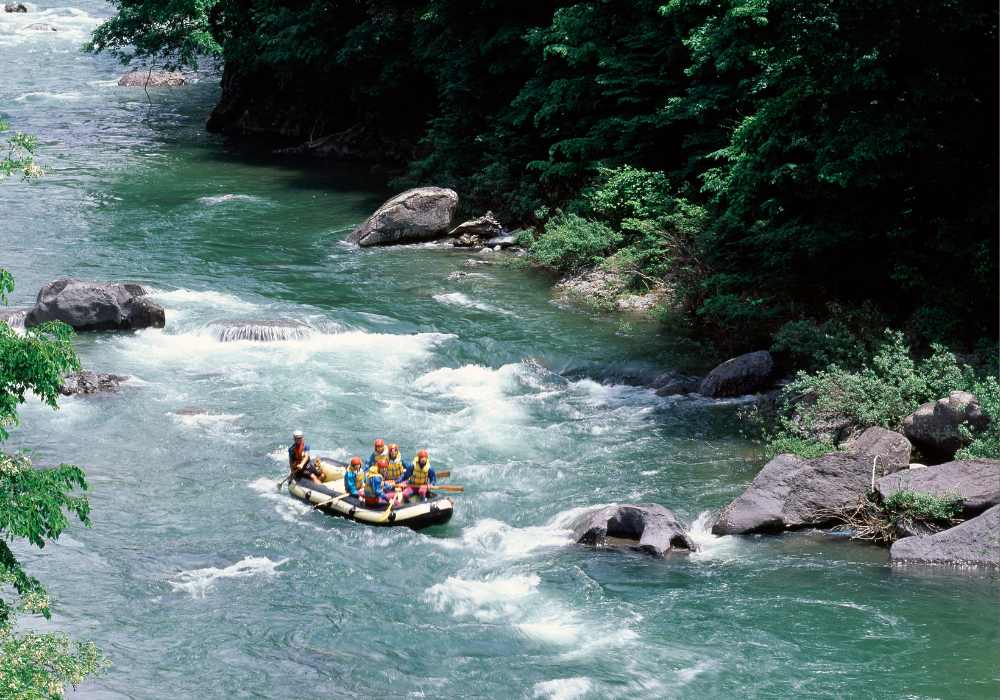
Guanacaste
Rio Tenorio – Class III and IV
Featuring some of the most exciting Class IV rapids in Costa Rica, the Tenorio River is ideal for experienced rafters and kayakers. Tenorio River Rafting will check your bravery with its continual challenges as you go through the turns, drops, and twists of intense, tricky rapids. All participants must be in good physical condition.
This is the largest whitewater river in the northern Pacific region, deriving from the mountain range and the Tenorio Volcano. The profoundly carved canyon is stunning, and, between the exhilarating rapids, you’ll have lots of chances to soak up the gorgeous natural surroundings.
Difficulty: Class II III
Approximate river time: 2.5 hours
Distance: 12 km/7.5 mi.
Number of rapids: 22, including the 12-foot waterfall drop, Cascabel Falls
Minimum age: 12 years
To wrap it up
There are more rivers for whitewater rafting than the ones we are citing here. However, we are listing the most important.
References
(01) N.a. “Top 10 Whitewater River Rafting Destinations.” Frommers.com. n.d. Web. 27 Jun. 2021. <https://www.frommers.com/slideshows/819247-top-10-whitewater-river-rafting-destinations>





